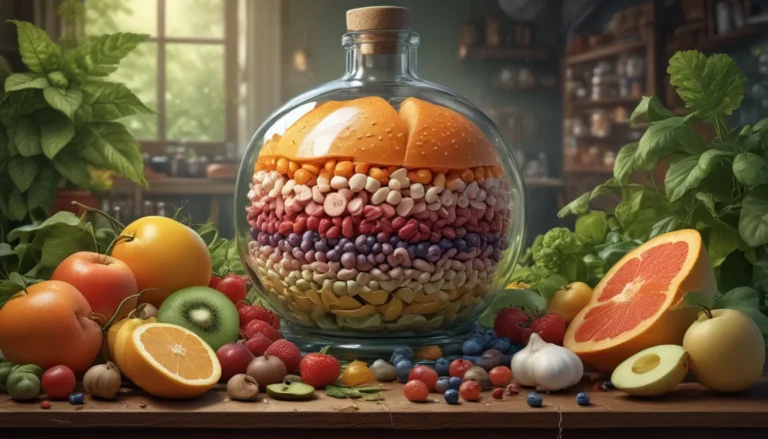A Note About Images: The images used in our articles are for illustration purposes only and may not exactly match the content. They are meant to engage readers, but the text should be relied upon for accurate information.
Welcome to the enchanting realm of glycosylation, a captivating biological process that adds a touch of sweetness to proteins and lipids. As sugar molecules delicately attach themselves to biomolecules, they intricately shape the functioning of our cells and bodies. Join us as we embark on a journey to uncover 9 astounding facts about glycosylation, shedding light on its significance in biology and healthcare.
Delving Into Glycosylation
Glycosylation is a complex dance between sugars and proteins, influencing their behavior and functionality. This intricate process is not just an adornment but a vital regulator of cellular functions, from protein folding to immune responses. With each sugar molecule that joins the party, glycosylation weaves a web of connections that impact our health and well-being.
The Dynamic Nature of Glycosylation
Unlike a static painting, glycosylation is a living artwork that evolves throughout our lives. It is a dynamic process, constantly shaping cellular communication, immune responses, and protein functions. As we age, glycosylation paints a picture of the journey our bodies have traveled, reflecting changes that can influence our health.
Exploring the Tapestry of Glycosylation Types
Just as in an artist’s palette, there are multiple hues of glycosylation. N-glycosylation, O-glycosylation, and glycolipid glycans are but a few brushstrokes in this colorful canvas. Each type brings its unique characteristics, locations, and functions, adding layers of complexity to the tapestry of glycosylation.
Glycosylation’s Symphony in Protein Function
In the orchestra of cellular processes, glycosylation plays a melodious tune that influences protein stability, folding, and interactions. Like a conductor directing a symphony, glycosylation patterns on proteins determine their activity, binding partners, and cellular destinations. It’s the sweet melody that harmonizes the functioning of our biological orchestra.
The Role of Glycosylation in Disease
When the sweet symphony of glycosylation hits a sour note, disease may arise. Abnormal glycosylation patterns have been linked to conditions like cancer, diabetes, and genetic disorders. By unraveling these patterns, scientists aim to identify diagnostic markers and potential therapeutic targets for these ailments, offering a glimmer of hope in the darkness of disease.
Glycosylation: A Conductor of the Immune Response
In the battlefield of the immune system, glycosylation acts as a strategic commander, shaping the recognition and binding of immune cells to pathogens. It facilitates cell-to-cell communication, orchestrates inflammatory processes, and fine-tunes the immune response. Like a skilled maestro, glycosylation modulates the harmony of our body’s defense mechanisms.
The Therapeutic Overture of Glycosylation
In the realm of therapeutics, glycosylation takes center stage, offering promising applications in drug development. From biopharmaceuticals to vaccines, glycosylation engineering enhances drug efficacy, stability, and immunogenicity. It’s a powerful tool that opens new doors to improving healthcare outcomes.
Glycosylation: A Biotechnologist’s Canvas
For biotechnologists, glycosylation is a blank canvas waiting to be painted with precision and care. Glycoengineering techniques are employed to optimize the production of recombinant proteins, enhance protein expression and secretion, and refine glycan structures for desired functions. It’s an art form that holds immense potential for breakthroughs in biotechnology.
The Ever-Changing Landscape of Glycosylation and Aging
As the clock of time ticks on, glycosylation patterns undergo metamorphosis, reflecting the changes that accompany aging. These age-related alterations can impact protein function, contributing to age-related diseases. Understanding these changes is key to unlocking the secrets of aging and age-related conditions.
Conclusion: Unraveling the Elegance of Glycosylation
In the intricate tapestry of biology, glycosylation emerges as a shimmering thread that weaves together the fabric of life. Its influence extends from protein folding to disease progression, offering a tantalizing glimpse into the mysteries of our cellular world. By delving into the depths of glycosylation, we unveil a realm of possibilities for research, discovery, and therapeutic interventions.
FAQs: Navigating the World of Glycosylation
- What is glycosylation?
-
Glycosylation is the process of attaching sugar molecules to proteins or lipids, resulting in the formation of glycoproteins and glycolipids.
-
Why is glycosylation important?
-
Glycosylation plays a crucial role in protein folding, stability, cell-to-cell communication, and immune response. It also impacts various diseases and can serve as a target for therapeutic interventions.
-
How does glycosylation affect protein function?
-
Glycosylation influences protein folding, stability, and localization. It can also modulate receptor-ligand interactions and enzymatic activity.
-
What are the different types of glycosylation?
-
There are several types of glycosylation, including N-glycosylation, O-glycosylation, and glycosylphosphatidylinositol (GPI) anchoring. Each type involves different mechanisms and sugar attachments.
-
How is glycosylation related to diseases?
-
Glycosylation abnormalities have been implicated in various diseases, including cancer, autoimmune disorders, and neurodegenerative conditions. These abnormalities can affect protein function and cellular signaling.
-
Can glycosylation be targeted for therapeutic purposes?
-
Yes, understanding the specific glycosylation patterns associated with diseases can help identify potential targets for drug development. Modulating glycosylation can potentially alter disease progression and improve treatment outcomes.
-
Are there any methods to study glycosylation?
-
Several techniques, including mass spectrometry, lectin-based assays, and glycan microarrays, are used to analyze glycosylation patterns and structures.
-
Can glycosylation be manipulated in the lab?
-
Yes, scientists can manipulate glycosylation in the lab through genetic engineering techniques or chemical modifications to study its effects on protein function and cellular processes.
-
What future research areas are related to glycosylation?
- Future research in glycosylation aims to uncover the precise roles of specific sugar modifications, understand their influence on disease progression, and develop targeted therapies based on glycosylation mechanisms.
As we conclude our foray into the captivating world of glycosylation, we invite you to continue exploring the boundless complexities of this fascinating biological process. With each discovery, we deepen our understanding of the intricate mechanisms that govern life itself. Join us on this journey of knowledge, discovery, and wonder as we unravel the mysteries of glycosylation, one sugar molecule at a time.






